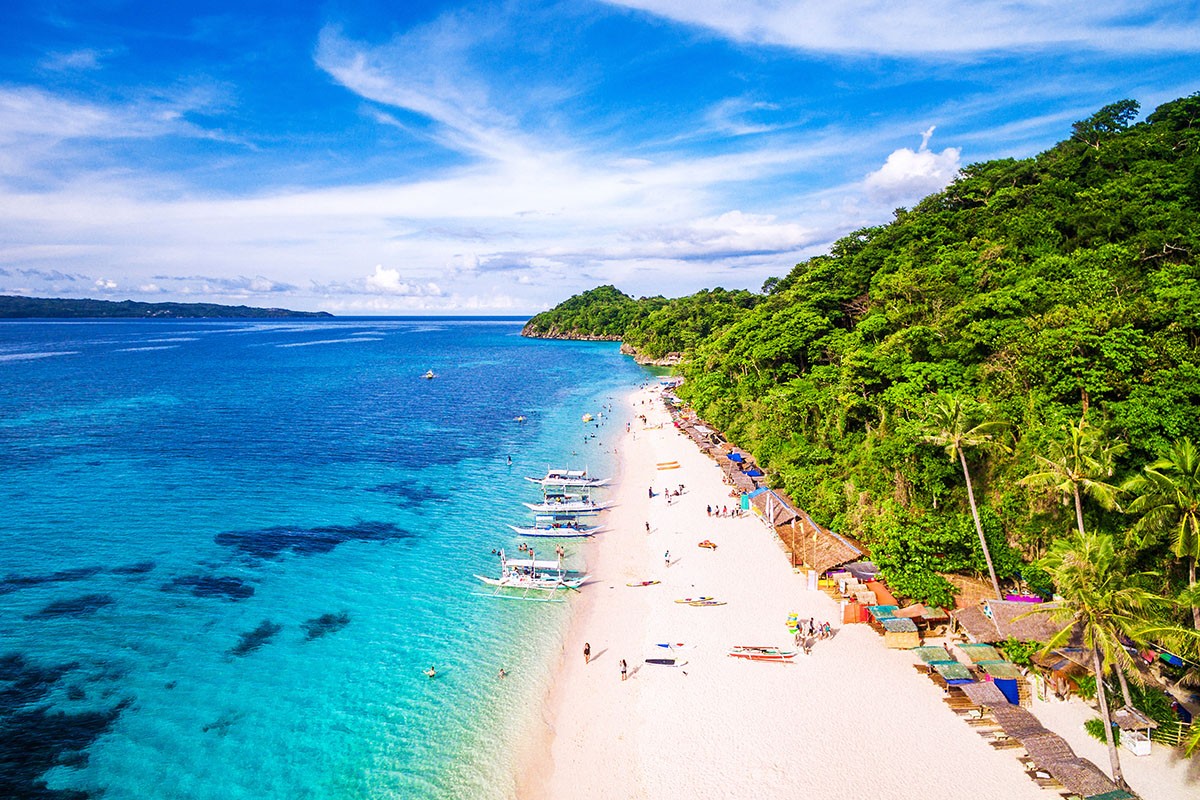Are you planning a trip to the Philippines? I spent a month in the country at the end of last year (2019) and I’d love to share all of my Philippines travel tips with you!
It was my first time in the Philippines – despite spending a lot of time in South East Asia over the last few years, I’d somehow never made it to the archipelago. But it had been on my list for a while, and I decided at the start of 2019 that it would be one of the destinations I would definitely make it to that year.
Halfway through 2019, I still hadn’t made it there, so I did the sensible thing and booked flights to the Philippines. As luck would have it, I then got invited on a press trip by the Philippines Tourism Board and also got involved with some other blogging trips while there. This meant that I had the opportunity to spend a lot of time with local people, which definitely helped me learn more about this incredible country.
I started my Philippines trip by flying into Cebu, spent a week diving in Bohol, then went on the press trip to Boracay and Panay Island, went up to Pampanga and finished it off in Mindanao.
Only Bohol and Boracay out of these are particularly touristy destinations; but wherever you go in the country, these things to know when planning a trip to the Philippines ring true.
So let’s get stuck into my very best Philippines travel tips! This Philippines vacation planner will help you plan your dream holiday to the South East Asian country.
Planning a Trip to the Philippines: Things to Know
How to Get There
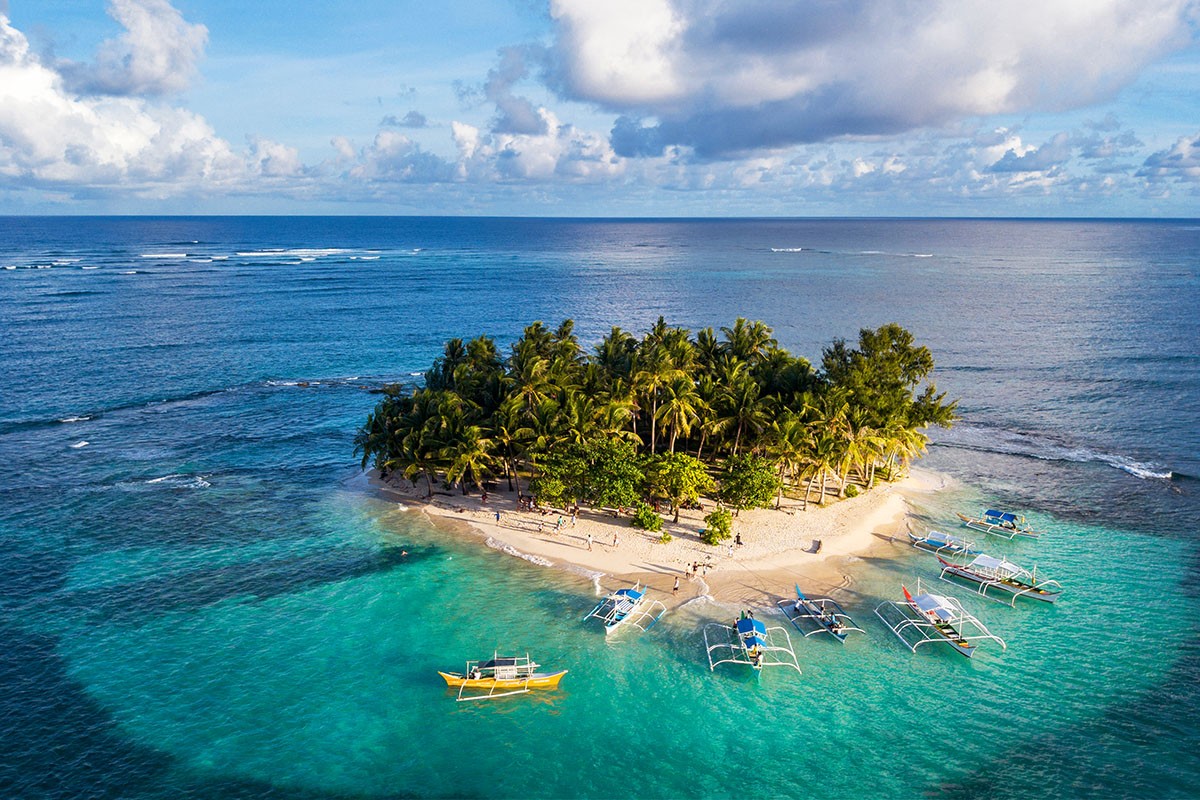
Being an archipelago, you do generally have to fly to get there (which is probably why I hadn’t made it there before, being an overland travel fanatic and all…). Most international flights go to Manila; the airport serves lots of destinations in Asia and some in Australasia and Europe as well. Cebu also has an international airport – I flew from London via Hong Kong to Cebu.
Everyone Speaks English
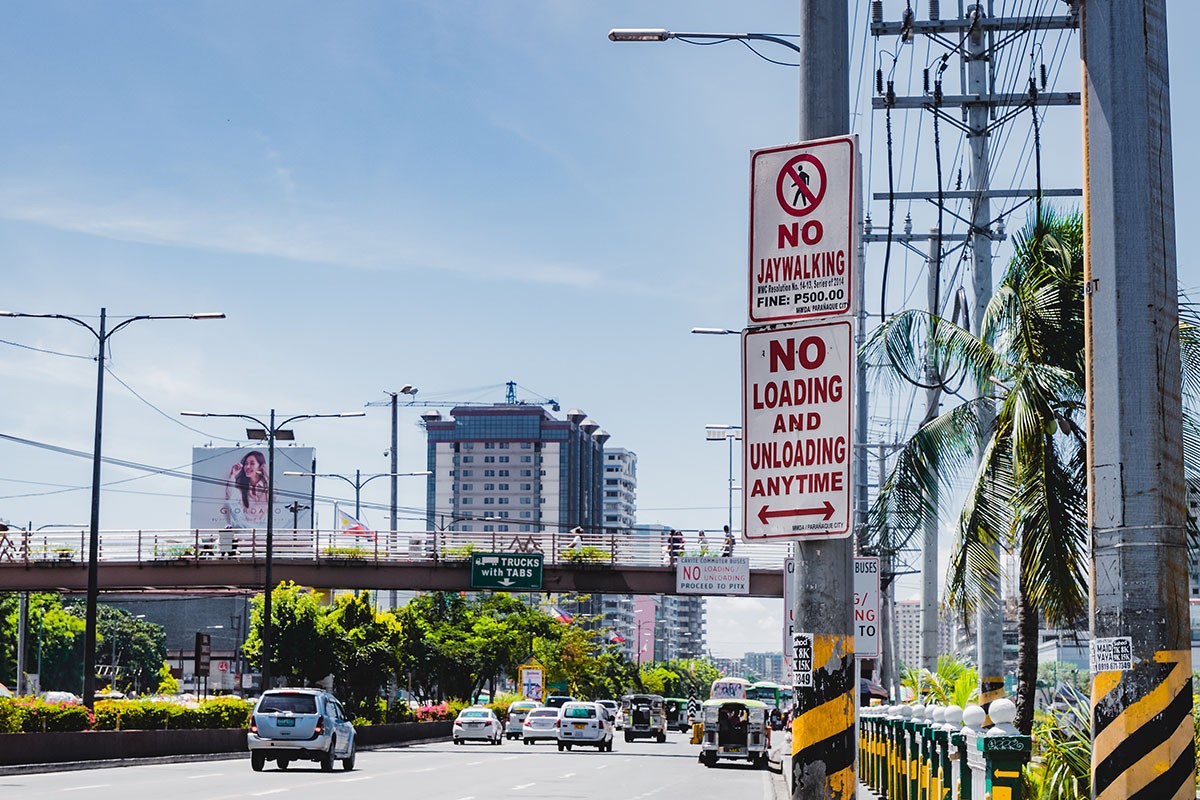
Because the Philippines was an American colony for just under 50 years, English is commonplace here.
It’s not only an official language, but nearly all of the official signs are written in English rather than Tagalog (the main language of Luzon and northern Philippines) and Visaya (the main language of Cebu and southern Philippines).
Filipinos will talk their native languages among themselves, but are just as happy to speak English, and most can do so fluently.
This is great for foreign travellers to the region, as not only does it make travelling around that little bit easier, but it also means that learning about the country becomes a lot more accessible, and it’s easy to make local friends!
During your trip to the Philippines, do make sure that you get to know some locals, ask them for stories and get to know the country on a deeper level.
Everyone is also Incredibly Lovely
Filipino people are probably the nicest people I’ve ever met. South Eastern culture is generally a very warm, friendly culture but Filipinos take it to the next level.
They will go out of their way to help visitors to their country, and are very keen to chat to travellers. If you’re planning a trip to the Philippines, do rest assured that the people will help you out with travel issues and questions that you have on the way. That’s Filipino culture; they’re happy to have people visiting their country, and they love to make sure that people have a great time while there!
The Internet can be Sporadic – Depending on Where You Go

I only experienced a lack of internet once in the Philippines, in Samal Island which is located near Davao in Mindinao – this was after two press trips and honestly, I was quite happy for the digital detox!
I know that it can be challenging in the more remote islands; if you need to stay connected you’ll want to purchase a SIM, or you can enjoy spending some time offline! Click here to order a SIM card to pick up at Manila airport.
In cities, in Boracay and Bohol and across Panay island, I found the internet fine. However, in certain places on Palawan it’s meant to be a bit sporadic, as well as many more of the remote islands.
Where To Go in the Philippines
There are so many places to consider visiting when you’re working out your Philippines travel plan.
The nation is, of course, most popular for its beaches and tropical island vibes – which is why most people turn to Palawan and Boracay.
These are the most popular islands in the Philippines by far; I’ve heard Palawan, while busy in some spots, is great for adventuring, and Boracay is definitely the place to visit if you want a luxury break.
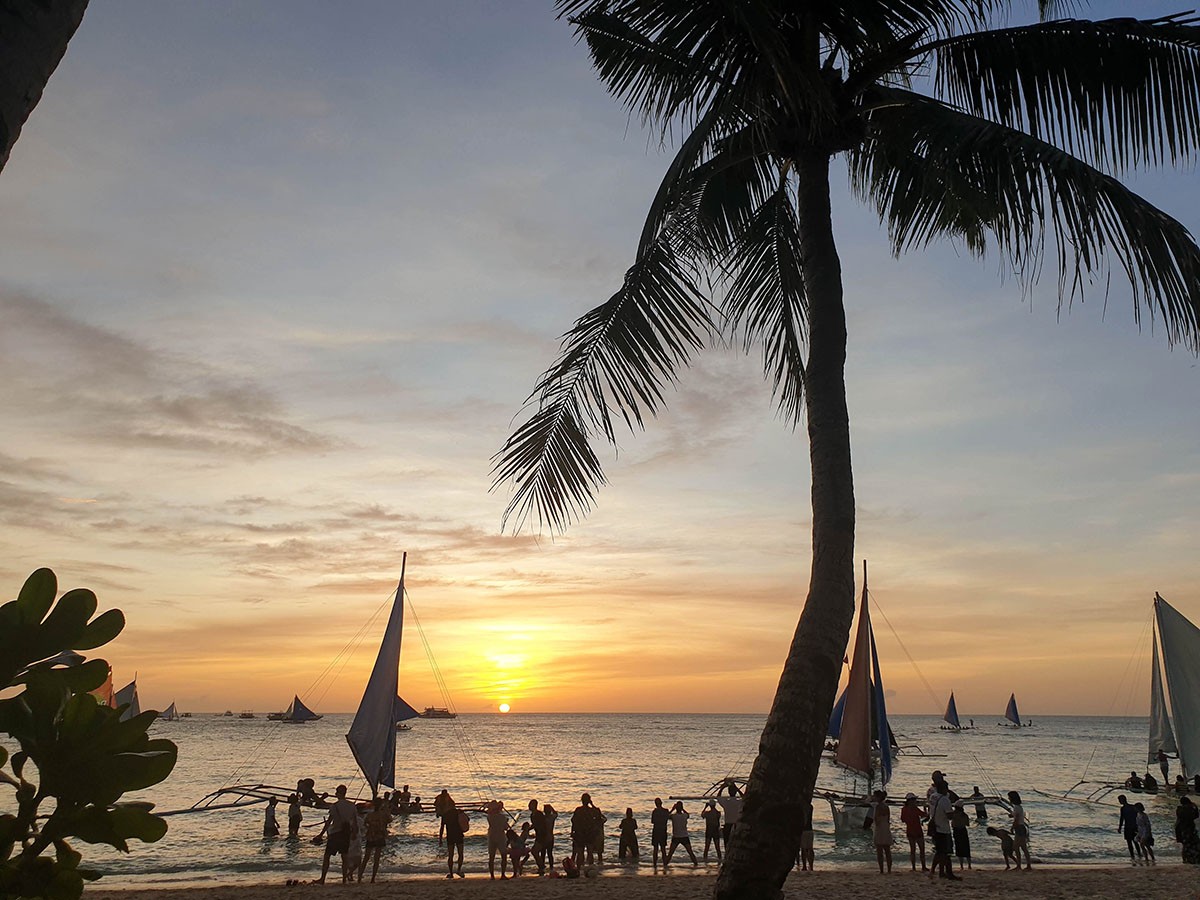
The islands around Cebu are worth visiting as well – I only made it to Bohol, but I’ve heard good things about Dumaguete, Siquijor and Malapascua, where you can dive with thresher sharks (advanced open water needed!). There are some really fun things to do in Cebu mainland as well; in particular, it has waterfalls and more beachy adventures.
Visit Luzon, the Philippines’ main island, for culture and food in Pampanga and more adventures in the highlands. Popular places are the Banaue Rice Terraces and Hanging Coffins of Sagada, where you can learn about an interesting Filipino tradition…
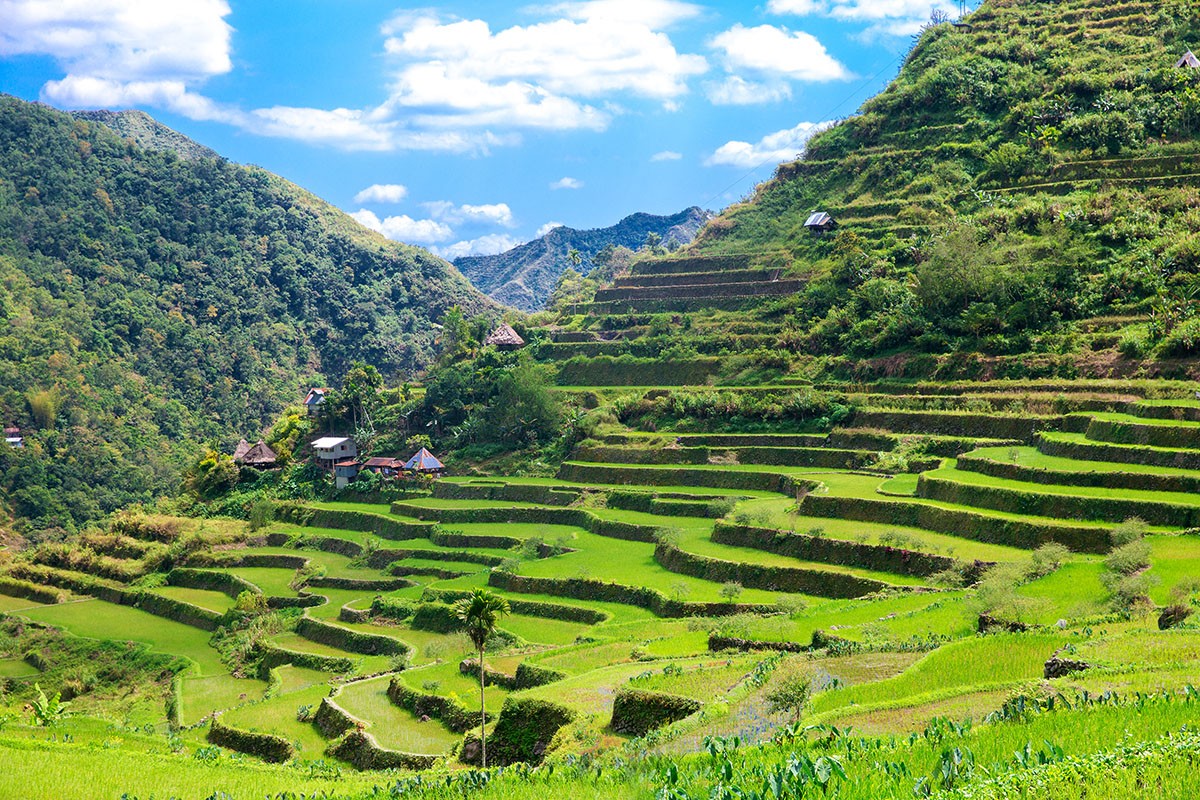
Mindanao is the infamous southern island that many governments warn against travel to. However, I spent a week there and learned it’s not quite as bad as it’s made out to be. It’s good to take precautions here, and I’ll go into these in a later blog post, but there are places in Mindanao that are definitely worth visiting.
There are, of course, hundreds more places to visit. I really want to see the Apo Reef and dive with the shipwrecks in Coron. Then there are the mountains of Luzon, with ample hiking opportunities, and many uninhabited islands to explore for a day.
There are so many places on my Philippines list – it actually makes planning a trip to the Philippines a little harder, because we’re spoilt for choice!
Things to Do in the Philippines
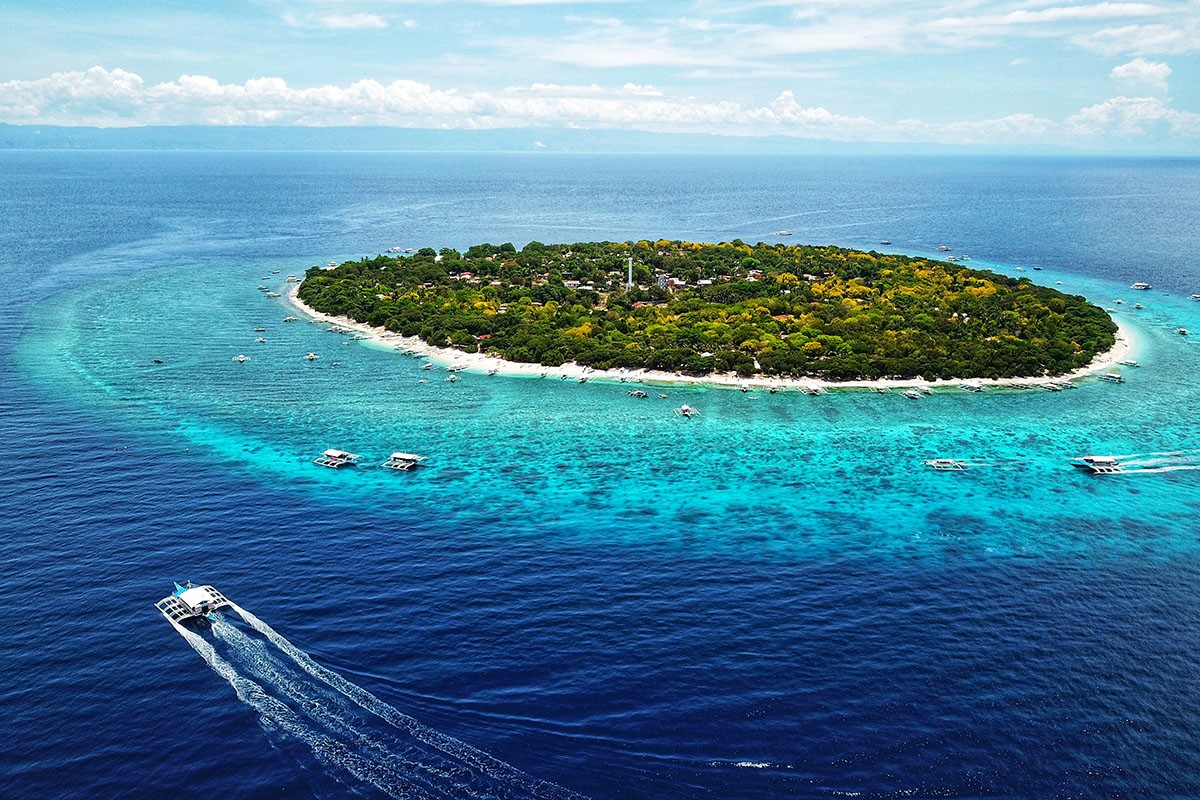
You might have some of an idea of the best things to do in the Philippines from the where to go section, however, these are just some of the amazing activities to enjoy in the Philippines – make sure you check some of these off while in the country!
- Diving – as mentioned, the Philippines is one of the best places in the world for it!
- Hanging out on beaches and enjoying sunsets
- Hiking volcanoes and rice terraces
- Learning about diverse local culture and fascinating local traditions and stories
- Visiting museums and learning about the nation’s history

When to Go
Most of the Phillippines is warm year-round with tropical wet and dry seasons, but it is sadly prone to many natural disasters.
The most seasonal of these are typhoons. Typhoon season is typically from June to October, although big typhoons can strike out of season – Panay, where I travelled with the press trip, was hit by one on Christmas Day.
It is best to travel in the Philippines outside of typhoon season, so from November to May, and January to May if you want to be really safe. Temperatures get a lot higher in April and May, making January and February the most popular months. These are also the most expensive months!
Visiting in the shoulder seasons – May and November – is cheaper and while there is still a small risk of typhoons, it is lower than in June to October.
That being said, many travellers still visit the Philippines during typhoon season and are not troubled at all by them.
How Much Money Do You Need?
You’ll probably want to work out your trip to the Philippines cost before you head out there.
The Philippines is a fairly cheap destination, although prices vary greatly depending on where you are, and what you want to do while there.
- Accommodation: hostels range from $5-$15 for a dorm room and $10-$30 for a private room. Budget hotels start from around $30 for a night, with prices increasing to a $200 – $300 per night for five star luxury accommodation. Click here to book with Booking.com
- Food: you can get a cheap street food meal for $2 and a dinner in a restaurant for $5-$8. More expensive restaurants would cost $10-$20.
- Alcohol: beers and rum and coke can cost under $1 if you know where to look. Drinks in the cities and touristy areas can be considerably more expensive!
- Transportation: i’ll talk about this a little more later in the post, but jeepneys and vans are budget-friendly, as are short boat rides and flights booked ahead of time.
- Activities: activities booked in the Philippines are generally very cheap, with diving costing as little as $30 per dive in some places, and island-hopping tours and countryside tours being very budget-friendly, between $10-$15. You can book activities on websites like Klook
and Get Your Guide.
Where to Stay in the Philippines
There are all sorts of different accommodations in the Philippines, ranging from budget backpacker hostels to super luxury hotels. There’s something to suit all tastes and budgets; hostels start from around $5 per night and the super luxury 5* hotels cost up to $300 per night.
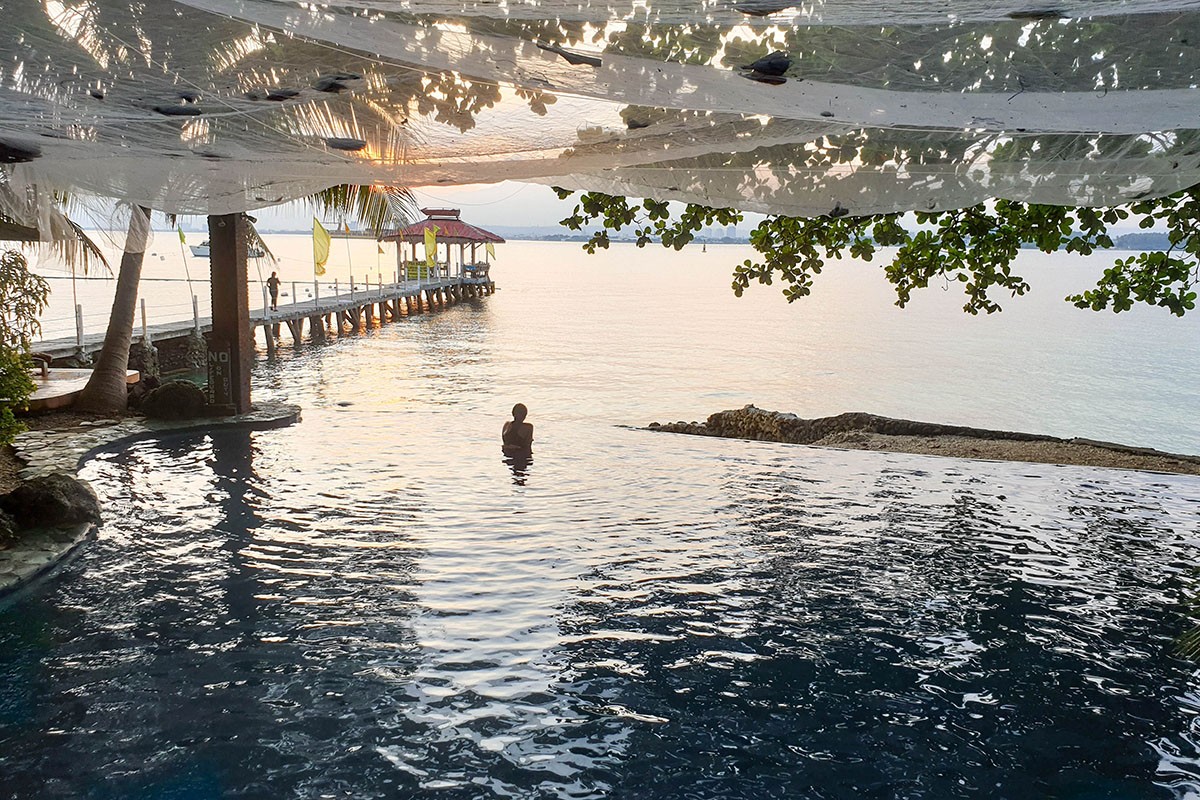
Wherever you choose, you’ll be graced with amazing Filipino hospitality wherever you go. For hostels, I’d recommend booking on HostelWorld, and for hotels try Booking.com.
Vegetarian Food
Filipino food doesn’t have the best reputation, although Filipinos and some travellers are trying to change that. I wasn’t able to sample too much authentic food while I was there though, as there is a big reliance on meat in dishes.
Vegetarian dishes are difficult to find in Filipino kitchens – I was reading about different dishes in Pampanga and finally found a vegetarian plate, and then realised it was called ‘the devil’ in the local language because it had no meat or fish in!
However, due to Filipinos’ English fluency and their hospitality, it generally isn’t difficult to get an adapted vegetarian or vegan dish. It won’t be the most authentic food, and you might be a bit tired of stir-fried veg and rice when you leave the Philippines, but it’ll keep you going.

Note: this was my experience in the less touristy parts of the Philippines, in the more touristy parts vegetarian or vegan food will be easier to come by. It still won’t be Filipino, but it’ll be a bit more varied to fried veg and rice!
If you’re vegetarian, vegan or are looking for vegan or vegetarian food in the Philippines, download the app Happy Cow to find restaurants in your area.
Religion in the Philippines
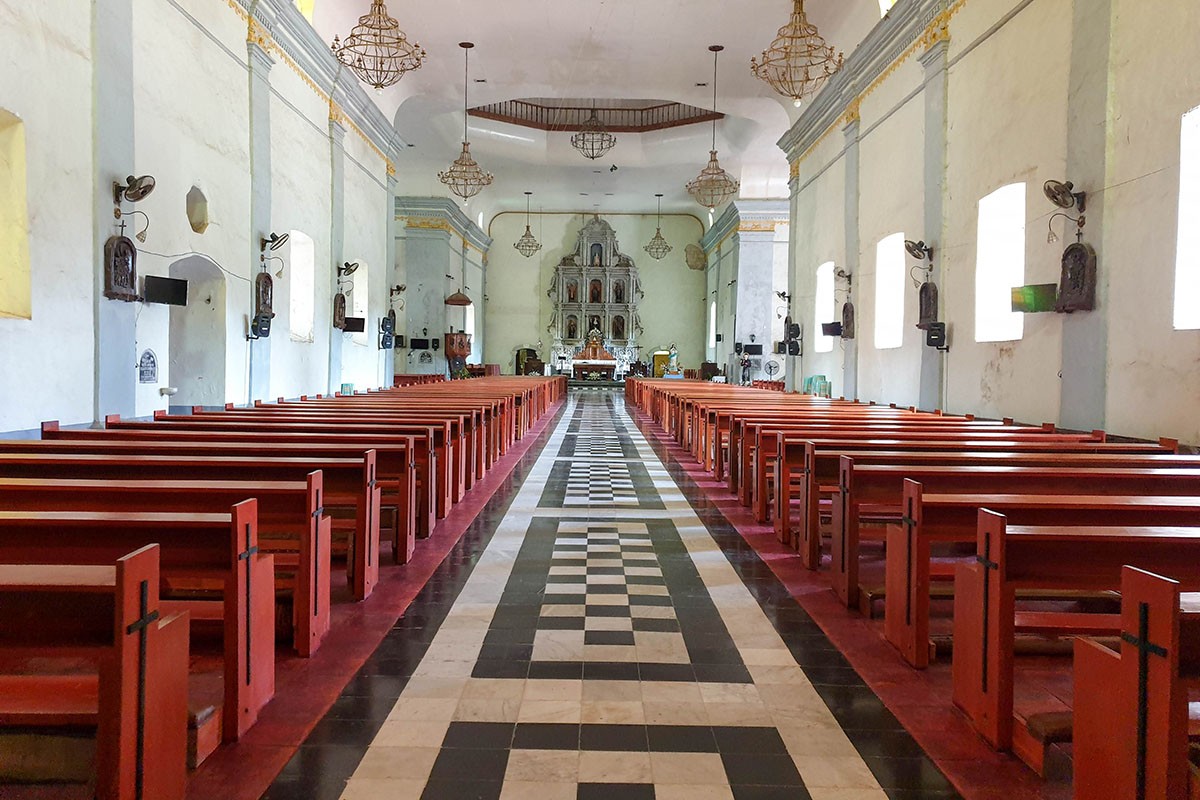
The Philippines is a unique country in the region for many reasons, one being that it is a majority Catholic country. The religion was brought to the country by Spanish colonisers and has stuck, big time. Filipinos are very religious and many go to church multiple times a week.
There are pockets of Islam all over the country as well, most notably in Mindanao, which is the closest part of the country to Malaysia and Indonesia. However, the huge majority of the country is Catholic.
This means that there are some beautiful churches to see, and also means that Christmas is super popular here. It starts at the end of August, and continues well into January! If you want to celebrate Christmas at any time during the Autumn or Winter, there’s nowhere better!
What to Wear in the Philippines
The Philippines has a much more relaxed dress code than the rest of South East Asia – sleeveless tops, shorts and shorter skirts are totally fine here and are worn by locals.
You should be a bit more covered up if you’re going into churches, of course, and you might want to dress a more modestly if you’re going to remote places, but generally, the dress code in the Philippines doesn’t need to be too modest.
How to Get Around
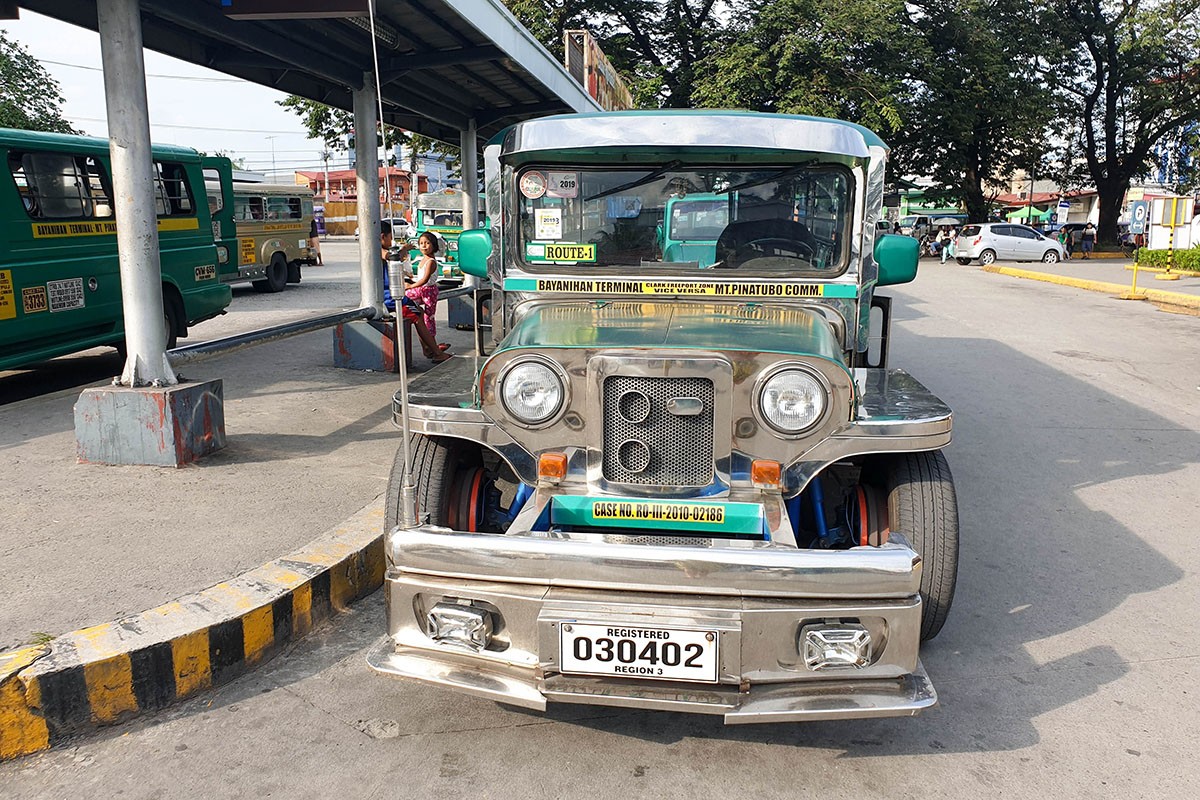
Being a nation of islands, travelling around the Philippines can be a tad complicated. For inter-island trips, most people fly, although there are passenger boats and ferries throughout the nation, and it is possible to do the Philippines by boat if you plan it enough!
Obviously, for smaller islands, you’ll need to go from the nearest bigger island, so you might have to hop around a bit.
On islands, you can take minivans which connect destinations, and within cities, you can try out a Philippine speciality: the jeepney. These WW2 jeeps have been turned into passenger transportation, and now shuttle locals to and from work and all over the city.
Popular in towns are tricycles – bikes with sidecars, which can fit 4 or 5 people in at a push! In larger cities, Grab is popular – it’s an app like Uber. In some areas, you can even get a Grab tricycle!
Getting around is relatively cheap wherever you are, although flights are best booked in advance.
You can use Bookaway to reserve transport in South East Asia. Click here to see their website.
Staying Safe in the Philippines
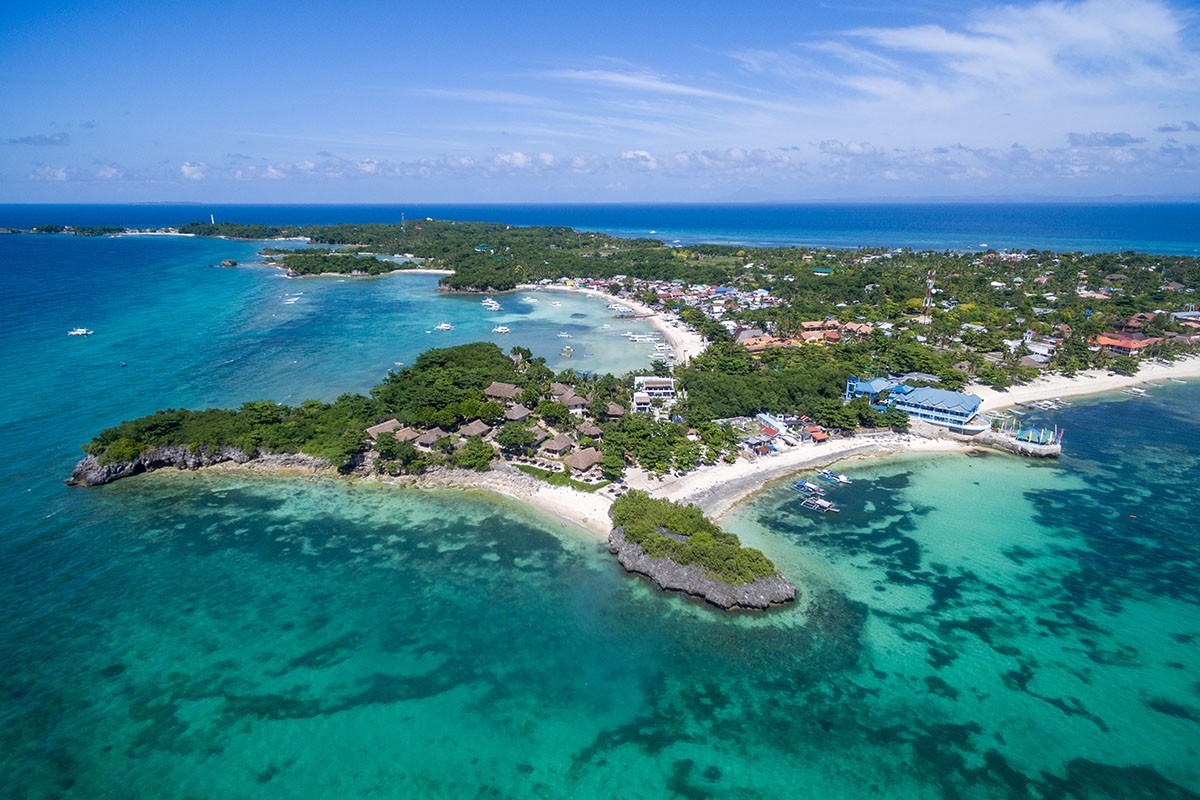
I’m not sure why, but a lot of travellers elsewhere in South East Asia seem to think that the Philippines is more dangerous than other countries in the area.
With the exception of Mindanao (which does have some safety issues that I’ll get into in a later blog post, but can still be visited if you do your research) this isn’t true at all – the Philippines to me felt completely safe.
In fact, I would argue that it felt even safer than other countries in the area because the English fluency of locals means that you’re constantly talking to people and making friends, and they’re always looking out for you.
What to Pack for the Philippines
As I mentioned, the Philippines is rather warm. In December, it ranged from sweltering in Mindanao to a little chilly without a jacket north of Manila in Luzon.
So you might want to take an extra layer if you’re venturing further north in Luzon in the winter, or going at altitude at all, but otherwise, you’ll be warm enough.
As I mentioned, the dress code typically does not need to be too modest, so pack as if you’re going for a summer holiday – with some scarves and long, light trousers to cover up in case you go anywhere that needs it.
Some great travel products I’d recommend buying are:
- A Water to go Bottle
- Reef-Safe Sunscreen
- Bamboo Travel Towel
- Packing Cubes
- Solid Shampoo and Conditioner
- Kindle
- Power Bank to keep your electronics charged on long journeys
Philippines Travel Plan: More Posts
This Philippines trip planner should help you plan your perfect holiday to the Asian archipelago. I’ve got lots more posts to come from my month in the Philippines, but here are some for now:
I have plenty of posts from Thailand, Laos, Cambodia, Vietnam, Malaysia, Singapore and Bali as well.
Thanks for reading! If you’ve enjoyed this post, please share it or follow me on Instagram or YouTube!

